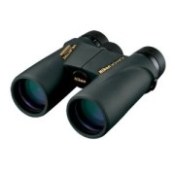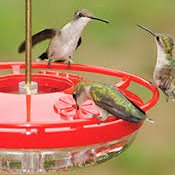
U.S. State Bird of Missouri and New York
-
Eastern Bluebird

The Eastern Bluebird is the State Bird of two states: Missouri and New York.
The once-prolific, Eastern Bluebird has been making a comeback from low numbers in the 1950s. The species suffered because natural nesting cavities were in short supply. They have recovered in part because many people provide special nesting boxes along fence rows for bluebirds, to supplement natural nesting cavities.
- American Ornithologist'Union Common Name: Eastern Bluebird
- Family: Turdidae, Thrushes
- Scientific name: Sialia sialis
- Length: 7" (18 cm)
- Diet: Insects, fruit, earthworms, snails, other invertebrates; especially berries. Young fed primarily insects. Hawking often from low perch, catching insects near ground. Very dependent on berries in winter.
- Voice: Song a pleasing soft phrase of mellow whitstles
chiti WEEW wewidoo and variations. Call of similar pleasant
musical quality: a soft, husky whistle jeew or jeew wiwi;
also a short, dry chatter.
- Habitat: Found in open woodlands, farmlands, orchards.
- Displays: Courting male sings and flutters in front of female, wings half open, tail spread, then perches beside and preens female, and may offer food.
- Number of broods: 2, occasionally 3.
- Nest: Often in woodpecker-excavated cavity; loose cup of grass, weed stems, pine needles, twigs, occasionally with hair or feathers. Built in average of 10-11 days. Female occasionally builds more than one nest.
- Eggs: Averages 4-5 pale blue, occasionally white, unmarked eggs. 0.8" (21 mm).
- Incubation period: 12-14 days
- Fledge: 15-20 days after hatching
- Longevity Record: 10 Years and 6 months (according to USGS Bird Banding Lab).
Eastern Bluebirds at a Nestbox
Watch for young to fledge.
Eastern Bluebird Live Nest Cam
On March 30, 1927, the Eastern Bluebird was officially designated the Missouri State Bird by an act of the Missouri Legislature because it was "common in Missouri" and "a symbol of happiness."
The Eastern Bluebird was adopted as the New York State Bird in 1970.More information about the The Eastern Bluebird, its life history, song and identification can be found here.
|
Our Favorite Bird Watching Binoculars, Squirrel-Proof Feeder & Hummingbird Feeder Read Our Reviews: |
||

Nikon Monarch M5
Best mid-priced bird watching binoculars. Waterproof, shockproof, multi-coated ED-Glass. |

|

Best Hummingbird Feeder
Drip-Free, Ant-moat, Durable, Easy to Fill and Clean. |
| Click Images or Links To View More Info | ||